Self-aeration
on
chute and stepped spillways
Air
entrainment and flow aeration in open channel flows
by Hubert CHANSON (h.chanson@uq.edu.au)
M.E., ENSHM Grenoble, INSTN, PhD (Cant.), DEng (Qld),
Eur.Ing., MIEAust., MIAHR, 13th
Arthur Ippen awardee
School of Civil Engrg., Univ. of Queensland, Brisbane QLD
4072, Australia
 Presentation
Presentation
The process of air entrainment (1)
in high-velocity open channel flows was initially studied because of the
effects of entrained air on the thickness of flowing water. Further, the
presence of air within the boundary layer reduces the shear stress between
the flow layers and hence the shear force (2).
Also it may prevent or reduce the damage caused by cavitation (3). Self-aeration on chutes is now
recognised for its substantial contribution to the air-water transfer of
atmospheric gases such as oxygen and nitrogen (4).
In an open channel, free-surface aeration occurs downstream of the
inception point. The 'inception point of air entrainment' is defined as
the point of apparition of 'white waters' or free-surface aeration (e.g. Photo No. 1 and Photo
No.
6). At the channel intake, the flow free-surface is smooth and
glassy. Next to the bottom, turbulence is generated and a boundary layer
grows. It is generally accepted that the inception point occurs when the
outer edge of the turbulent boundary layer reaches the surface (5). Downstream of the point of
inception, a layer containing a mixture of both air and water extends
gradually through the fluid. The rate of growth of the layer is small and
the air concentration distribution varies gradually with distance.
Self-aeration is an interfacial aeration process, with an uncontrolled
supply of air. Next to the free-surface, the entrained air is advected in
region of low shear (10).
In the aerated flow region, the distribution of air concentration (6) may be estimated by the
solution of the air bubble diffusion equation :
(1) 
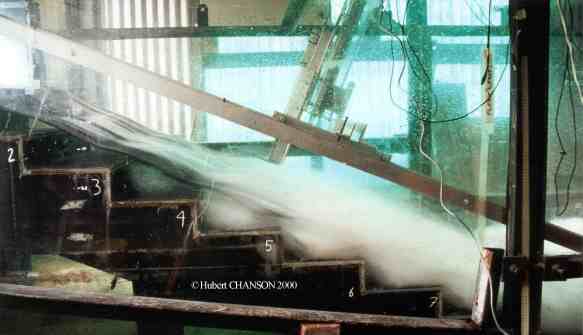 where
C
is the void fraction, y is the distance normal to the invert, Y90
is the characteristic distance where C = 90%, D' is a dimensionless air
bubble diffusivity, K' is an integration constant and tanh is the
hyperbolic tangent function (7)
(8). K' and D' are functions only of the
mean air concentration Cmean, where the depth-averaged mean
void fraction is defined as :
where
C
is the void fraction, y is the distance normal to the invert, Y90
is the characteristic distance where C = 90%, D' is a dimensionless air
bubble diffusivity, K' is an integration constant and tanh is the
hyperbolic tangent function (7)
(8). K' and D' are functions only of the
mean air concentration Cmean, where the depth-averaged mean
void fraction is defined as :
(2) Cmean = 1 - d/Y90
and d is the equivalent clear water depth (or blackwater depth) (9). Equation (1) was validated
successfully with prototype and model data (10)
(Photo No. 3). It applies to
smooth-invert chute flows and skimming flows down stepped cascades.
More sophisticated models were recently developed assuning a non-constant
diffusivity distribution (10, 11).
They were successfully applied to self-aerated flow on smooth chutes,
skimming and transition flows on stepped chutes, and flow aeration at
nappe impact and downstream of nappe impact at drop structures and in
nappe flow regime above stepped cascades.
Table 1 - Relationship between Cmean, D' and K' (after CHANSON
1995,1997)
|
Cmean
|
D'
|
K'
|
fe/f
|
|
(1)
|
(2)
|
(3)
|
(4)
|
|
0.0
|
0.0
|
+¥
|
1.0
|
|
0.01
|
0.007312
|
68.70445
|
1.0
|
|
0.05
|
0.036562
|
14.0029
|
1.0
|
|
0.10
|
0.073124
|
7.16516
|
0.9969
|
|
0.15
|
0.109704
|
4.88517
|
0.973
|
|
0.20
|
0.146489
|
3.74068
|
0.9216
|
|
0.30
|
0.223191
|
2.567688
|
0.7824
|
|
0.40
|
0.3111
|
1.93465
|
0.6449
|
|
0.50
|
0.423441
|
1.508251
|
0.5176
|
|
0.60
|
0.587217
|
1.178924
|
0.3893
|
|
0.70
|
0.878462
|
0.896627
|
0.2474
|
Discussion
At uniform equilibirum (i.e. normal flow conditions), the momentum principle
states that the boundary friction force equals exactly the gravity force
component in the flow direction: i.e., the weight-of-water component acting
parallel to the invert. The uniform equilibrium velocity and depth must be
calculated in terms of the air-water flow properties, including the
air-water friction factor fe. Recent results showed convincingly
that the Darcy friction factor fe is smaller than the monophase
flow friction coefficient because the entrained air induced some drag
reduction. In smooth chute, the reduction in skin friction is associated
with air entrainment causing a thickening of the momentum sublayer (CHANSON
1994, Photo No. 4). In skimming flow,
drag reduction is caused by interactions by entrained air bubbles and the
developing mixing layers (CHANSON 2004).
Footnotes
(1) Natural aeration occurring at the
free surface of high velocity open channel flows is referred to as free
surface aeration, air entrainment, flow aeration, self-aeration or 'white
waters'.
(2) For a full explanation, see
CHANSON (1994), "Drag Reduction in Open Channel Flow by Aeration and
Suspended Load", Journal of Hydraulic Research and CHANSON
(2004).
"Drag Reduction in Skimming Flow on Stepped Spillways by Aeration", Jl of Hydraulic Research. The
above Table 1, column 4, shows the ratio of the air-water friction
factor fe to the clear-water Darcy friction factor f (for
identical flow rate and clear-water flow depth) as a function of the
mean air concentration for smooth-invert chutes. See also Photo
No. 4.
(3) For example, WOOD (1984), CHANSON
(1997).
(4) That includes re-oxygenation,
supersaturation in dissolved nitrogen. While the re-oxygenation of
depleted water is a positive outcome, supersaturation of dissolved
nitrogen may increase fish mortality. In the Columbia and Snake rivers
(USA), 'gas bubble disease' caused by water supersaturated in nitrogen
was a significant cause of fish mortality for salmonids and steelheads.
(5) This statement is widely accepted
in steep chutes (smooth invert and stepped cascade), but it is not
correct on flat waterways. CHANSON (1997) presents some evidence
supercritical open channel flows for flat chutes.
(6) The air concentration or void
fraction is defined as the volume of air per unit volume of air and
water.
(7) Although this relationship was
developed for smooth-invert chutes (CHANSON 1995,1997), model and
prototype data show that it is also valid in skimming flow down stepped
spillways. A limitation of the model is the assumption of a constant
vertical distribution of air bubble diffusivity D'. CHANSON and TOOMBES
(2001,2002) presented however more advanced analytical models with
non-constant vertical distributions, that compared well with transition
flows on stepped chute and the flow immediately downstream of a drop
structure.
(8) Next to the spillway invert, model
and prototype data depart from Equation (1) (CHANSON 1994). The air
concentration tends to zero at the bottom (i.e. y=0) indicating an air
concentration boundary layer. The existence of an air concentration
boundary layer is consistent with experimental data of fine air bubble
injection in turbulent boundary layer flows. This air boundary layer
plays a major role in the drag reduction process taking place in
self-aerated flows.
(9) For very long spillway chutes, the
mean air concentration reaches an equilibrium Ce at the
downstream end that is a function of the bed slope q only : Ce = 0.9 * sinq (WOOD 1983,
CHANSON 1997).
(10) See CHANSON (1995,1997) and
CHANSON and TOOMBES (1997,2001).
(11) See CHANSON and TOOMBES (2001,
pp. 59-61; 2002, 2003).
Detailed
photographs
Photo No. 1 : Free-surface aeration down
Chinchilla weir spillway during a small overflow on 8 Nov. 1997. Chinchilla
weir is a minimum energy loss weir design near the township of Chinchilla
(QLD, Australia) on the Condamine river. It is 14-m high earthfill structure
(410-m long at crest) with a spillway capacity of 850 m3/s. Completed in
1973, the minimum energy loss weir design was selected to pass large floods
with minimum energy loss, hence with minimum upstream flooding. The weir was
tested shortly after completion with a large overflow (~ 400 m3/s)
and
it is listed as a large dam by ANCOLD and ICOLD. (More information : CHANSON,
Butterworth-Heinemann, 1999, pp. 417-421.)
Photo No. 2 : View from upstream of
the Split Rock dam spillway on 6 Sept. 1998 (Courtesy of Mr. Noel
BEDFORD). The Split Rock dam is a rockfill embankment (66-m high, 469-m
long) completed in 1987 near Tamworth (NSW, Australia). The point of
inception of air entrainment is clearly visible with white waters
downstream. At the downstream end, the kinetic energy of the flow is
dissipated in a 6-m deep plunge pool, before rejoining the natural stream
bed.
Photo No. 3 : Air concentration
distributions : comparison between Equation (1) and experimental data
(STRAUB and ANDERSON 1958)
Photo No. 4 : Drag reduction caused
by self-aeration observed in prototype spillways and spillway models
(after CHANSON 1994). Figure after CHANSON (1997).
Photo No. 5 : Air entrainment in
skimming flow down a 50 degree slope (h = 20 mm). The inception point of
air entrainment is clearly visible upstream of the measurement trolley
system.
Photo No. 6 : Air entrainment in
skimming flow down a 22 degree slope for dc/h = 1.1 (h = 100
mm).
Related photographs of
free-surface aeration at hydraulic structures
Photos No. 11 to 13 : Air entrainment in high-velocity water jets
discharging into air, Three Gorges Project and Dam (Yichang, China,
2002-2007). Concrete gravity dam. Length: 2300 m, Height: 181 m. Powerplant:
32 Francis turbines (700 MW each). Photo No.
11: scour outlet discharge below the spillway section on 20 Oct. 2004
(Q = 7000 m3/s, V = 35 m/s). Photo No. 12
: high-velocity flow from an outlet sluice on 20 Oct. 2004 (V = 35 m/s);
note the large amount of 'white waters' highlighting strong free-surface
aeration. Photo No. 13 : free-surface
aeration along the bottom outlet jet flow downstream of the spillway section
on 20 Oct. 2004 (V = 35 m/s).
Photos No. 14 to 15 : Air entrainment in a near-full-scale dropshaft.
Drop in invert elevation: 1.7 m, pool depth: 1 m, shaft dimensions: 0.75 m
by 0.76 m, flow rates: 5 to 70 L/s (CHANSON
2003, IAHR Congress; CHANSON 2004, Jl
Irrig. & Drainage Engrg). Photo
No. 14 : Regime R1, photograph for Q = 7.6 L/s (July 2002) ; Photo
No. 15 : Regime R3, photograph for Q = 67 L/s (Aug. 2002).
Photos No. 16 to 19: Air entrainment in hydraulic jumps. A
hydraulic jump is a stationary transition from a rapid (supercritical flow)
to a slow flow motion (subcritical flow). It is extremely turbulent and
characterised by the development of large-scale turbulence, surface waves
and spray, energy dissipation and air entrainment (eg CHANSON
and
BRATTBERG 2000). The large-scale turbulence region is usually called
the 'roller'. Photo No. 16 : air
entrainment in a steady jump; Photo No. 17
: air entrainment in a strong hydraulic jump (Fr >10); Photo
No. 18 : surfer riding on a hydraulic jump roller in a river (Munich,
Germany), flow from right to left and 'white waters' (Courtesy of Dale
YOUNG); Photo No. 19: air entrainment
and surfer on a hydraulic jump roller, looking downstream (Courtesy of Dale
YOUNG).
Photos No. 20 to 28: Air entraiment in plunging jets.
Air entrainment at a vertical supported jet. Photo
No. 20 : Individual bubble entrainment at a vertical supported jet
[Ref.: CUMMINGS
&
CHANSON 1999], low-speed air bubble entraiment, elongated air cavity
formation & entrainment of bubbles, cavity and scaling located 45-mm
towards the camera from the jet centre line; Jet impact flow conditions : V
= 1.20 m/s, Tu = 1.08 %, d = 8.0 mm, Lj = 34mm - Video shutter
speed : 1.0 ms; Frame interval : 20 ms. Photo
No. 21 : Strong air entrainment for V1 = 6.14 m/s, x1 = 0.090 m, probe
position : x-x1 = 0.10 m [Ref.: BRATTBERG
and
CHANSON
1998].
More on Air entrainment
in the developing flow region of two-dimensional plunging jets
...
Air bubble entrainment at a circular vertical plunging jet. Photo
No.
22 : Experiments at the University of Queensland (CHANSON
and MANASSEH 2003), flow from top to bottom (Circular jet, V1 = 3.3
m/s, do = 25 mm) with freshwater. Photo
No. 23 : Experiments at Toyohashi University of Technology (CHANSON
et al. 2004) with freshwater, air entrainment at a 12.5 mm diameter
plunging jet (V1 = 2 m/s). Photo
No. 24 : air entrainment at a 6.83 mm diameter jet (V1 = 2.1 m/s). Photo No. 25
: Experiments at Toyohashi University of Technology with seawater, air
bubble entrainment at a 12.5 mm diameter plunging jet (x1 = 0.05 m, V1 = 2.5
m/s) (CHANSON et al. 2002). Photo
No. 26 : same flow conditions, high shutter speed (1/1,000 s). Photo
No.
27 : seawater collection on 25 Oct. 2001. Photo
No.
28 : seawater collection and checking on 25 Oct. 2001.
More on Acoustic
characteristics of air entrainment at plunging jets
...
Photos No. 29 to 31: Air entrainment on stepped spillway and stilling basin
Paradise dam, Biggeden QLD (Australia) - RCC gravity dam equipped with
an uncontrolled stepped spillway. Photo
No. 29: General view of the spillway on 5 March 2013. Photo No. 30: Details of the
free-surface next to the inception of free-surface aeration on the stepped
spillway on 5 March 2013. Photo No. 31:
turbulence and air-water flow in the stilling basin on 5 March 2013.
Photos No. 101 to 115: Air entrainment on prototype stepped spillways
Hinze dam spillway (Stage 3),
Australia in operation on 29/1/2013 at 12:15, Q ~ 170 m3/s. Photo No. 101: View from downstream of
the stepped spillway operation. Photo
No. 102: View from upstream of the uncontrolled ogee and stepped chute
operation. See also: "Interactions between a Developing Boundary Layer and
the Free-Surface on a Stepped Spillway: Hinze Dam Spillway Operation in
January 2013", Proc. 8th International
Conference on Multiphase Flow ICMF 2013, Jeju, Korea, 26-31 May,
Gallery Session ICMF2013-005 (Video duration: 2:15). (Description)
(Record
at
UQeSpace) (Video
movie at UQeSpace). Site visit with CIVL4120 Advanced hydraulics
students on 24 October 2014: Photo
No.103: general view of stepped spillway and stilling basin. Photo No. 104: stilling
basin and turning veins leading to an ogee weir. Photo
No. 1105: stepped spillway with 3.3 m high baffle blocks in the
foreground. Photo No. 106:
details of baffle block. Photo
No. 107: engineering students discussing about the spillway system
next to a baffle block. Photo
No. 108: CIVL4120 students with Professor Chanson at the spillway toe.
Photo No. 109b:
stepped spillway toe and stilling basin. Small overflow on 3 May 2015: Photo No. 118: View from downstream; Photo No. 119: View from
upstream, with flow direction from top to bottom.
Paradise dam, Biggeden QLD
(Australia) - RCC gravity dam equipped with an uncontrolled stepped
spillway. Photo No. 109:
General view of the spillway on 5 March 2013. Photo
No. 110: View of the spillway and stilling basin operation on 5 March
2013. Photo No. 111:
Details of the free-surface next to the inception of free-surface aeration
on the stepped spillway on 5 March 2013. Photo
No. 112: turbulence and air-water flow in the stilling basin on 5
March 2013.
Joe Sippel weir (Murgon QLD,
Australia) - Completed in 1984, the 6.5-m high stepped weir is used for
irrigation and water regulation purposes. The structure was built of steel
sheet piles and concrete slabs. It is located upstream of the Silverleaf
weir. Photo No. 113:
in November 1997. Photo
No. 114: on 5 March 2013. Photo
No. 115: details of the plunge point on 5 March 2013.
Related
links
References
[1] CHANSON, H. (1994) "Drag Reduction in Open Channel Flow by Aeration and
Suspended Load." Jl of Hyd. Res., IAHR, Vol. 32, No. 1, pp. 87-101
(ISSN 0022-1686). (download PDF file)
[2] CHANSON, H. (1995). "Air Bubble Diffusion in Supercritical Open Channel
Flow." Proc. 12th Australasian Fluid Mechanics Conference AFMC,
Sydney, Australia, R.W. BILGER Ed., Vol. 2, pp. 707-710 (ISBN 0 86934 034
4). (Download PDF File)
[3] CHANSON, H. (1997). "Air Bubble
Entrainment in Free-Surface Turbulent Shear Flows." Academic Press,
London, UK, 401 pages (ISBN 0-12-168110-6).
[4] STRAUB, L.G., and ANDERSON, A.G. (1958). "Experiments on Self-Aerated
Flow in Open Channels." Jl of Hyd. Div., Proc. ASCE, Vol. 84, No.
HY7, paper 1890, pp. 1890-1 to 1890-35.
[5] WOOD, I.R. (1984). "Air Entrainment in High Speed Flows." Proc.
Intl. Symp. on Scale Effects in Modelling Hydraulic Structures, IAHR,
Esslingen, Germany, H. KOBUS editor, paper 4.1.
[6] CHANSON, H., and TOOMBES, L. (1997). "Flow Aeration at Stepped
cascades." Research Report No. CE155, Dept. of Civil Engineering,
University of Queensland, Australia, June, 110 pages (ISBN 0 86776 730 8). (PDF version at EprintsUQ)
[7] CHANSON, H., and TOOMBES, L. (2001). "Experimental Investigations of Air
Entrainment in Transition and Skimming Flows down a Stepped Chute.
Application to Embankment Overflow Stepped Spillways." Research Report
No. CE158, Dept. of Civil Engineering, The University of Queensland,
Brisbane, Australia, July (ISBN 1 864995297). (Download
PDF
files : Part 1 and Part
2) (Alternate
PDF
file at EprintsUQ)
[8] CHANSON, H., and TOOMBES, L. (2002). "Air-Water Flows down Stepped
chutes : Turbulence and Flow Structure Observations." Intl
Jl of Multiphase Flow, Vol. 27, No. 11, pp. 1737-1761 (ISSN
0301-9322). (Download PDF
File)
[9] CHANSON, H., and TOOMBES, L. (2003). "Strong Interactions between
Free-Surface Aeration and Turbulence in an Open Channel Flow." Experimental
Thermal and Fluid Science, Vol. 27, No. 5, pp. 525-535 (ISSN
0894-1777). (Download PDF
File)
[10] CHANSON, H. (2004). "Air-Water Flows in Water Engineering and Hydraulic
Structures. Basic Processes and Metrology." Proc.
Intl Conf. on Hydraulics of Dams and River Structures, Tehran,
Iran, Keynote lecture, Balkema Publ., The Netherlands, F. YAZDANDOOST and J.
ATTARI Ed., pp. 3-16 (ISBN 90 5809 632 7). (Also CD-ROM, Taylor
& Francis, ISBN 90 5809 683 4.) (Download
PDF file)
[11] CHANSON, H. (2004). "Drag Reduction in Skimming Flow on Stepped
Spillways by Aeration." Jl of Hyd.
Research, IAHR, Vol. 42, No. 3 , pp. 316-322 (ISSN 0022-1686). (Download PDF
file)
[12] CHANSON, H., and GONZALEZ, C.A. (2005). "Physical Modelling and Scale
Effects of Air-Water Flows on Stepped Spillways." Journal
of Zhejiang University SCIENCE, Vol. 6A, No. 3, March, pp. 243-250
(ISSN 1009-3095). (Download PDF
file)
Video movies on YouTube
Physical Modelling of Air Bubble Entrainment in Vertical Planar Plunging
Jets - {https://youtu.be/GcAiBD4LpwM}
Stepped Spillway Research - {https://youtu.be/j_AsUXD4D3M}
Bibliography
AROSQUIPA NINA, Y, SHI, R., WÜTHRICH, D., and CHANSON, H.
(2022). "Intrusive and Non-Intrusive Two-Phase Air-Water Measurements on
Stepped Spillways: a Physical Study." Experimental Thermal and Fluid
Science, Vol. 131, Paper 110545, 22 pages, 4 movies and a digital
appendix (6 pages) (DOI: 10.1016/j.expthermflusci.2021.110545) (ISSN
0894-1777). (PDF file) (Preprint at UQeSpace) (Video movies at UQeSpace)
BRATTBERG, T., and CHANSON, H. (1998). "Air Entrapment and Air
Bubble Dispersion at Two-Dimensional Plunging Water Jets." Chemical
Engineering
Science, Vol. 53, No. 24, Dec., pp. 4113-4127 (ISSN 0009-2509) (Download PDF file).
Errata: 1999, Vol. 54, No. 12, p. 192 (Download
PDF file).
CAROSI, G., and CHANSON, H. (2006). "Air-Water Time and Length Scales
in Skimming Flows on a Stepped Spillway. Application to the Spray
Characterisation." Report No. CH59/06,
Div. of Civil Engineering, The University of Queensland, Brisbane,
Australia, July, 142 pages (ISBN 1864998601). (PDF
version at EprintsUQ)
CHANSON, H. (1995). "Predicting Oxygen Content Downstream of Weirs,
Spillways and Waterways." Proc. Instn Civ. Engrs Wat. Marit. &
Energy, UK, Vol. 112, Mar., pp. 20-30. Discussion: 1998, Vol. 130, No.
2, pp. 115-116 (ISSN 0965-0946). (Download
PDF file)
CHANSON, H. (1999). "Air-Water Bubbly Flows : Theory and
Applications." Doctor of Engineering
thesis, Univ. of Queensland, Australia. (PDF
version at EprintsUQ)
CHANSON, H. (2002). "Very Strong Free-Surface Aeration in
Turbulent Flows : Entrainment Mechanisms and Air-Water Flow Structure at the
"Pseudo" Free-Surface"." in "Interaction of Strong Turbulence with Free
Surfaces", World Scientific, Advances
in Coastal and Ocean Engineering Series, Vol.
8, Singapore, M. BROCCHINI and D.H. PEREGRINE Ed., Vol. 8, pp. 65-98
(ISBN 981-02-4952-7). (PDF
file at EprintsUQ)
CHANSON, H. (2004). "Air Entrainment in Hydraulic Engineering." in "Fluvial, Environmental & Coastal
Developments in Hydraulic Engineering", Balkema, Leiden, The Netherlands,
Proc. International Workshop on State-of-the-Art Hydraulic Engineering,
16-19 Feb. 2004, Bari, Italy, M. MOSSA, Y. YASUDA and H. CHANSON Ed., pp.
17-63 (ISBN 04 1535 899 X). (PDF
version at EprintsUQ)
CHANSON, H. (2006). "Air Bubble Entrainment in Hydraulic Jumps.
Similitude and Scale Effects." Report No.
CH57/05, Dept. of Civil Engineering, The University of Queensland,
Brisbane, Australia, Jan., 119 pages (ISBN 1864998423). (PDF
Version at EprintsUQ)
CHANSON, H. (2007). "Bubbly Flow Structure in Hydraulic Jump." European Journal of Mechanics B/Fluids,
Vol. 26, No. 3, pp.367-384 (DOI:10.1016/j.euromechflu.2006.08.001) (ISSN
0997-7546). (PDF
file at UQeSpace)
CHANSON, H. (2008). "Physical Modelling, Scale Effects and
Self-Similarity of Stepped Spillway Flows." Proc.
World Environmental and Water Resources Congress 2008 Ahupua'a,
ASCE-EWRI, 13-16 May, Hawaii, R.W. BADCOCK Jr and R. WALTON Eds., Paper 658,
10 pages (ISBN: 978-0-7844-0976-3). (PDF
file at UQeSpace)
CHANSON, H. (2009). "Current Knowledge In Hydraulic Jumps And
Related Phenomena. A Survey of Experimental Results." European
Journal of Mechanics B/Fluids, Vol. 28, No. 2, pp. 191-210 (DOI:
10.1016/j.euromechflu.2008.06.004 ) (ISSN 0997-7546). (PDF
file
at UQeSpace)
CHANSON, H. (2013). "Hydraulics of Aerated Flows: Qui Pro Quo?" Journal of Hydraulic Research, IAHR,
Invited Vision paper, Vol. 51, No. 3, pp. 223-243 (DOI:
10.1080/00221686.2013.795917) (ISSN 0022-1686). (Postprint
at UQeSpace) (Reprint)
(PDF file)
CHANSON, H. (2013). "Interactions between a Developing Boundary Layer
and the Free-Surface on a Stepped Spillway: Hinze Dam Spillway Operation in
January 2013", Proc. 8th International
Conference on Multiphase Flow ICMF 2013, Jeju, Korea, 26-31 May,
Gallery Session ICMF2013-005 (Video duration: 2:15). (Description)
(Record
at
UQeSpace) (Video
movie at UQeSpace). (Video movie on YouTube)
CHANSON, H. (2020). "On velocity estimations in highly aerated flows
with dual-tip phase-detection probes - A commentary." International
Journal of Multiphase Flow, Vol. 132, Paper 103330, 5 pages (DOI:
10.1016/j.ijmultiphaseflow.2020.103330) (ISSN 0301-9322). (PDF file) (Preprint at UQeSpace)
CHANSON, H. (2021). "Stepped Spillway Prototype Operation, Spillway
Flow and Air Entrainment: the Hinze Dam, Australia." Hydraulic Model
Report No. CH123/21, School of Civil Engineering, The University of
Queensland, Brisbane, Australia, 183 pages (DOI: 10.14264/c8d5280) (ISBN
978-1-74272-354-9 [Print]; 978-1-74272-355-6 [Electronic]). (Deposit at UQeSpace)
CHANSON, H. (2022). "On Air Entrapment Onset and Surface Velocity in
High-Speed Turbulent Prototype Flows." Flow Measurement and
Instrumentation, Vol. 83, Paper 102122, 9 pages (DOI:
10.1016/j.flowmeasinst.2022.102122) (ISSN 0955-5986). (Postprint at UQeSpace) (PDF file)
CHANSON, H. (2022). "Stepped Spillway Prototype Operation and Air
Entrainment: Toward a Better Understanding of the Mechanisms Leading to Air
Entrainment in Skimming Flows." Journal of Hydraulic Engineering,
ASCE, Vol. 148, No. 11, Paper 05022004, 17 pages (DOI:
10.1061/(ASCE)HY.1943-7900.0002015) (ISSN 0733-9429). (PDF file) (Preprint at UQeSpace)
CHANSON, H. (2024). "Self-aeration on large dam spillways during
major floods." Journal of Hydro-environment Research, IAHR, Vol. 54,
pp. 26-36 (DOI: 10.1016/j.jher.2024.03.002) (ISSN 1570-6443). (PDF file) (Deposit at UQeSpace)
CHANSON, H. (2024). "Self-aeration and Surface Velocities in
Ultra-High Reynolds Number Free-Surface Flows." 24th Australasian Fluid
Mechanics Conference AFMC2024, Canberra, Australia, 1-5 December,
Poster Paper PO-I-1. (PDF file) (Deposit at UQeSpace)
CHANSON, H., and HU, J. (2024). "Self Aeration and Energy
Dissipation on a Steep Stepped Chute: How does Physical Modelling compare to
Prototype Observations?" Environmental Fluid Mechanics, Vol. 24, No.
3, pp. 465=488 (DOI: 10.1007/s10652-024-10001-5) (ISSN 1567-7419 [Print]
1573-1510 [Online]). (PDF
file) (Deposit
at UQeSpace)
CHANSON, H., and AROSQUIPA NINA, Y. (2024). "Momentum and
energy considerations in self‑aerated free‑surface flows." Environmental
Fluid Mechanics, Vol. 24, No. 2, pp. 183-202 (DOI:
10.1007/s10652-024-09978-w) (ISSN 1567-7419 [Print] 1573-1510 [Online]). (PDF
file) (Record
at UQeSpace)
CHANSON, H., and GUALTIERI, C. (2008). "Similitude and Scale Effects
of Air Entrainment in Hydraulic Jumps."
Journal of Hydraulic Research, IAHR, Vol. 46, No. 1, pp. 35-44
(ISSN 0022-1686). (PDF
file at UQeSpace)
CHANSON, H., and BRATTBERG, T. (1997). "Experimental Investigations
of Air Bubble Entrainment in Developing Shear Layers." Report CH48/97,
Dept. of Civil Engineering, University of Queensland, Australia, Oct., 309
pages (ISBN 0 86776 748 0). (Order a Hard
Copy) (PDF Version
at EprintsUQ)
CHANSON, H., and BRATTBERG, T. (2000). "Experimental Study of the
Air-Water Shear Flow in a Hydraulic Jump." Intl Jl of Multiphase Flow,
Vol. 26, No. 4, pp. 583-607 (ISSN 0301-9322). (download
PDF file)
CHANSON, H., AOKI, S., and HOQUE, A. (2004). "Physical Modelling and
Similitude of Air Bubble Entrainment at Vertical Circular Plunging Jets." Chemical Engineering Science, Vol. 59,
No. 4, pp. 747-754 (ISSN 0009-2509). (Download
PDF file)
CHANSON, H., AOKI, S., and HOQUE, A. (2006). "Bubble Entrainment and
Dispersion in Plunging Jet Flows: Freshwater versus Seawater." Journal
of Coastal Research, Vol. 22, No. 3, May, pp. 664-677 (DOI:
10.2112/03-0112.1) (ISSN 0749-0208). (PDF
file at EprintsUQ)
CHANSON, H., and CAROSI, G. (2007). "Turbulent Time and Length Scale
Measurements in High-Velocity Open Channel Flows." Experiments
in Fluids, Vol. 42, No. 3, pp. 385-401 (DOI
10.1007/s00348-006-0246-2) (ISSN 0723-4864). (PDF
File) (PDF
file
at UQeSpace)
CHANSON, H., and CUMMINGS, P.D. (1996). "Air-Water Interface Area in
Supercritical Flows down Small-Slope Chutes." Research Report No. CE151,
Dept. of Civil Engineering, University of Queensland, Australia, Feb., 67
pages (ISBN 0 86776 635 2). (PDF
version at EprintsUQ)
CHANSON, H., LENG, X., and WANG, H. (2019). "Bubbles, Transient
Turbulence and Fish - Challenging Hydraulic Structures of the 21st Century."
Proc. 38th IAHR World Congress, Panama City, 1-6 Sept., IAHR
Publication, Lucas CALVO Editor, Plenary lecture, 11 pages (ISSN 2521-7119
(Print) - ISSN 2521-716X (Online) - ISSN 2521-7127). (PDF
file) (Deposit
at UQeSpace)
CHANSON, .H., LENG, X., and WANG, H. (2021). "Challenging Hydraulic
Structures of the 21st Century - From Bubbles, Transient Turbulence to Fish
Passage." Journal of Hydraulic Research, IAHR, Invited Vision
Paper, Vol. 59, No. 1, pp. 21-35 (DOI: 10.1080/00221686.2020.1871429)
(ISSN 0022-1686). (PDF
file) (Preprint
at UQeSpace)
CHANSON, H., and MURZYN, F. (2008). "Froude Similitude and Scale
Effects Affecting Air Entrainment in Hydraulic Jumps." Proc.
World
Environmental and Water Resources Congress 2008 Ahupua'a,
ASCE-EWRI, 13-16 May, Hawaii, R.W. BADCOCK Jr and R. WALTON Eds., Paper 262,
10 pages (ISBN: 978-0-7844-0976-3). (PDF
file at UQeSpace)
FELDER, S., and CHANSON, H. (2013). "Air Entrainment and Energy
Dissipation on Porous Pooled Stepped Spillways." Proceedings of International Workshop on
Hydraulic Design of Low-Head Structures, IAHR, 20-22 Feb.,
Aachen, Germany, D. BUNG and S. PAGLIARA Editors, Bundesanstalt für
Wasserbau (BAW, Karlsruhe), pp. 87-97 (ISBN 978-3-939230-04-5). (PDF
file)
FELDER, S., and CHANSON, H. (2016). "Air–water flow characteristics
in high-velocity free-surface flows with 50% void fraction." International
Journal of Multiphase Flow, Vol. 85, pp. 186-195(DOI:
10.1016/j.ijmultiphaseflow.2016.06.004) (ISSN 0301-9322). (PDF file) (Reprint at UQeSpace)
GONZALEZ, C.A., and CHANSON, H. (2005). "Experimental Study of
Turbulence Manipulation in Stepped Spillways. Implications on Flow
Resistance in Skimming Flows." Proc. 31th
Biennial IAHR Congress, Seoul, Korea, B.H. JUN, S.I. LEE, I.W. SEO
and G.W. CHOI Editors, Theme D.7, Paper 0057, pp. 2616-2626 (ISBN 89 87898
24 5). (Download PDF file)
GUALTIERI, C., and CHANSON, H. (2021). "Physical and numerical
modelling of air-water flows: An Introductory Overview." Environmental
Modelling and Software, Review paper, Vol. 143. Paper 105109,
14 pages (DOI: 10.1016/j.envsoft.2021.105109) (ISSN 1364-8152). (PDF file) (Deposit at UQeSpace)
GUENTHER, P., FELDER, S., and CHANSON, H. (2013). "Flat and Pooled
Stepped Spillways for Overflow Weirs and Embankments: Cavity Flow Processes,
Flow Aeration and Energy Dissipation." Proceedings of International Workshop on
Hydraulic Design of Low-Head Structures, IAHR, 20-22 Feb.,
Aachen, Germany, D. BUNG and S. PAGLIARA Editors, Bundesanstalt für
Wasserbau (BAW, Karlsruhe), pp. 77-86 (ISBN 978-3-939230-04-5). (PDF file)
MÜLLER, L., and CHANSON, H. (2020). "Singular air entrapment at
vertical and horizontal supported jets: plunging jets versus hydraulic
jumps." Environmental Fluid Mechanics, Vol. 20, No. 4, pp. 1075-1100
(DOI: 10.1007/s10652-020-09742-w) (ISSN 1567-7419 [Print] 1573-1510
[Online]). (PDF
file) (Postprint
at UQeSpace)
LEANDRO, J., CARVALHO, R., CHACHEREAU, Y., and CHANSON, H. (2012).
"Estimating Void Fraction in a Hydraulic Jump by Measurements of Pixel
Intensity." Experiments in Fluids,
Vol. 52, No. 5, Page 1307-1318 (DOI: 10.1007/s00348-011-1257-1) (ISSN
0723-4864). (Postprint
at UQeSpace) (PDF
file)
MURZYN, F., and CHANSON, H. (2007). "Free Surface, Bubbly flow
and Turbulence Measurements in Hydraulic Jumps." Report
CH63/07, Hydraulic Model Report CH series, Division of Civil
Engineering, The University of Queensland, Brisbane, Australia, August,
July, 116 pages (ISBN 9781864998917). (PDF
file at UQeSpace)
PFISTER, M., and CHANSON, H. (2013). "Scale Effects in
Modelling Two-Phase Air-Water Flows." Proc. 35th IAHR World Congress,
Chengdu, China, 8-13 Sept., WANG Z., LEE, J.H.W., GAO, J., and CAO S.
Editors, Paper A10253, 10 pages (ISBN 978-7-302-33544-3). (PDF file) (Record
at UQeSpace)
MURZYN, F., and CHANSON, H. (2008). "Experimental Assessment of
Scale Effects Affecting Two-Phase Flow Properties in Hydraulic Jumps." Experiments in Fluids, Vol. 45, No. 3,
pp. 513-521 (DOI: 10.1007/s00348-008-0494-4) (ISSN 0723-4864). (PDF
file
at UQeSpace)
SHI, R., WÜTHRICH, D., and CHANSON, H. (2023). "Air-water
Properties of Unsteady Breaking Bores Part 1: Novel Eulerian and Lagrangian
Velocity Measurements using Intrusive and Non-intrusive Techniques." International
Journal of Multiphase Flow, Vol. 159 Paper 104338, 16 pages (DOI:
10.1016/j.ijmultiphaseflow.2022.104337) (ISSN 0301-9322). (Postprint at UQeSpace) (PDF file)
SHI, R., WÜTHRICH, D., and CHANSON, H. (2023). "Air-water
Properties of Unsteady Breaking Bore Part 2: Void Fraction and Bubble
Statistics." International Journal of Multiphase Flow, Vol. 159,
Paper 104337, 14 pages (DOI: 10.1016/j.ijmultiphaseflow.2022.104337) (ISSN
0301-9322). (Postprint
at UQeSpace) (PDF
file)
SUN, S., and CHANSON, H. (2013). "Characteristics of Clustered
Particles in Skimming Flows on a Stepped Spillway." Environmental
Fluid Mechanics, Vol. 13, No. 1, pp. 73-87 (DOI:
10.1007/s10652-012-9255-2) (ISSN 1567-7419 [Print] 1573-1510 [Online]). (Postprint
at UQeSpace) (PDF
file)
TAKAHASHI, M., GONZALEZ, C.A., and CHANSON, H. (2006).
"Self-Aeration and Turbulence in a Stepped Channel: Influence of Cavity
Surface Roughness." International Journal
of Multiphase Flow, Vol. 32, pp. 1370-1385
(DOI:10.1016/j.ijmultiphaseflow.2006.07.001) (ISSN 0301-9322). (PDF
file
at EprintsUQ)
TOOMBES, L., and CHANSON, H. (2005). "Air-Water Mass Transfer on a
Stepped Waterway." Jl of Environ. Engrg.,
ASCE, Vol. 131, No. 10, pp. 1377-1386 (ISSN 0733-9372). (Download
PDF file)
TOOMBES, L., and CHANSON, H. (2005). "Air Entrainment and Velocity
Redistribution in a Bottom Outlet Jet Flow." Proc.
31th Biennial IAHR Congress, Seoul, Korea, B.H. JUN, S.I. LEE, I.W.
SEO and G.W. CHOI Editors, Theme D7, Paper 0080, pp. 2716-2726 (ISBN 89
87898 24 5). (Download PDF file)
TOOMBES, L., and CHANSON, H. (2007). "Surface Waves and
Roughness in Self-Aerated Supercritical Flow." Environmental
Fluid
Mechanics, Vol. 7, No. 3, pp. 259-270 (DOI
10.1007/s10652-007-9022-y) (ISSN 1567-7419 (Print) 1573-1510 (Online)). (PDF file at
UQeSpace)
TOOMBES, L., and CHANSON, H. (2008). "Flow Patterns in Nappe
Flow Regime down Low Gradient Stepped Chutes."
Journal of Hydraulic Research, IAHR, Vol. 46, No. 1, pp. 4-14 (ISSN
0022-1686). (PDF
file at UQeSpace)
WANG, H., and CHANSON, H. (2013). "Physical Modelling of
Hydraulic Jump: Dynamic Properties and Internal Two-Phase Flow." Proc. 35th
IAHR World Congress, Chengdu, China, 8-13 Sept., WANG Z., LEE, J.H.W., GAO,
J., and CAO S. Editors, Paper A10310, 10 pages (ISBN 978-7-302-33544-3). (PDF file) (Record at UQeSpace)
WANG, H., FELDER, S., and CHANSON, H. (2014). "An Experimental
Study of Turbulent Two-Phase Flow in Hydraulic Jumps and Application of a
Triple Decomposition Technique." Experiments
in Fluids, Vol. 55, No. 7, Paper 1775, 18 pages & 2 video
movies (DOI: 10.1007/s00348-014-1775-8) (ISSN 0723-4864). (Postprint at
UQeSpace) (PDF
file) (Video
movies at UQeSpace)
WANG, H., LENG, X., and CHANSON, H. (2017). "Bores and
Hydraulic Jumps. Environmental and Geophysical Applications." Engineering
and
Computational Mechanics, Proceedings of the Institution of Civil
Engineers, UK, Vol. 170, No. EM1, pp. 25-42 (DOI: 10.1680/jencm.16.00025)
(ISSN 1755-0777). (PDF
file) (Reprint
at
UQeSpace)
ZHANG, G. (2017). "Free-Surface Aeration, Turbulence, and
Energy Dissipation on Stepped Chutes with Triangular Steps, Chamfered Steps,
and Partially Blocked Step Cavities." Ph.D. thesis, The University
of Queensland, School of Civil Engineering, 361 pages (DOI:
10.14264/uql.2017.906). (PDF
at UQeSpace)
ZHANG, G., and CHANSON, H. (2017). "Self-aeration in the
rapidly- and gradually-varying flow regions of steep smooth and stepped
spillways." Environmental Fluid Mechanics, Vol. 17, No. 1, pp. 27-46
(DOI: 10.1007/s10652-015-9442-z) (ISSN 1567-7419 [Print] 1573-1510
[Online]). (PDF
file) (Preprint
at
UQeSpace)
ZHANG, G., and CHANSON, H. (2018). "Application of Local
Optical Flow Methods to High-Velocity Free-surface Flows: Validation and
Application to Stepped Chutes." Experimental Thermal and Fluid Science,
Vol. 90, pp. 186-199 (DOI: 10.1016/j.expthermflusci.2017.09.010) (ISSN
0894-1777). (PDF
file) (Record
at UQeSpace)
Acknowledgments
The writer acknowledges the assistance of Noel BEDFORD to obtain some
photographs of interest.
License

This work is licensed under a Creative
Commons Attribution-NonCommercial 3.0 Unported License.
Hubert
CHANSON is a Professor in Civil Engineering, Hydraulic Engineering
and Environmental Fluid Mechanics at the University
of Queensland, Australia. His research interests include design of
hydraulic structures, experimental investigations of two-phase flows,
applied hydrodynamics, hydraulic engineering, water quality modelling,
environmental fluid mechanics, estuarine processes and natural resources.
He has been an active consultant for both governmental agencies and
private organisations. His publication record includes over1200
international refereed papers and his work was cited over 7,500 times
(WoS) to 25,500 times (Google
Scholar) since 1990. His h-index is 45 (WoS), 51 (Scopus) and 74 (Google
Scholar), and he is ranked among the 150 most cited researchers in
civil engineering in Shanghai’s
Global Ranking of Academics. Hubert Chanson is the author of twenty
books, including "Hydraulic Design
of Stepped Cascades, Channels, Weirs and Spillways" (Pergamon,
1995), "Air Bubble Entrainment in
Free-Surface Turbulent Shear Flows" (Academic
Press, 1997), "The Hydraulics
of Open Channel Flow: An Introduction" (Butterworth-Heinemann,
1st edition 1999, 2nd
editon 2004), "The Hydraulics of
Stepped Chutes and Spillways" (Balkema,
2001), "Environmental
Hydraulics of Open Channel Flows" (Butterworth-Heinemann,
2004), "Tidal
Bores, Aegir, Eagre, Mascaret, Pororoca: Theory And Observations" (World
Scientific, 2011), "Applied
Hydrodynamics:
an Introduction" (CRC
Press, 2014). He co-authored three further books "Fluid Mechanics
for Ecologists" (IPC Press, 2002), "Fluid Mechanics for Ecologists.
Student Edition" (IPC, 2006) and
"Fish Swimming in Turbulent Waters. Hydraulics Guidelines
to assist Upstream Fish Passage in Box Culverts" (CRC Press 2021). His textbook "The Hydraulics
of Open Channel Flows: An Introduction" has already been translated
into Spanish (McGraw-Hill
Interamericana) and Chinese (Hydrology Bureau of Yellow
River Conservancy Committee), and the second
edition was published in 2004. In 2003, the IAHR
presented him with the 13th Arthur Ippen Award
for outstanding achievements in hydraulic engineering. The American
Society of Civil Engineers, Environmental and Water Resources Institute
(ASCE-EWRI) presented him with the 2004 award for the Best Practice paper
in the Journal of Irrigation and Drainage Engineering ("Energy
Dissipation
and Air Entrainment in Stepped Storm Waterway" by Chanson and
Toombes 2002), the 2018 Honorable Mention Paper Award for "Minimum Specific
Energy and Transcritical Flow in Unsteady Open-Channel Flow" by
Castro-Orgaz and Chanson (2016) in the ASCE Journal of Irrigation and
Drainage Engineering, and the 2020 Outstanding Reviewer Award. The
Institution of Civil Engineers (UK) presented him the 2018 Baker Medal. In
2018, he was inducted a Fellow of the Australasian
Fluid Mechanics Society. Hubert Chanson edited further several books
: "Fluvial, Environmental and Coastal
Developments in Hydraulic Engineering" (Mossa, Yasuda & Chanson
2004, Balkema), "Hydraulics.
The
Next Wave" (Chanson & Macintosh 2004, Engineers
Australia), "Hydraulic
Structures:
a Challenge to Engineers and Researchers" (Matos & Chanson 2006,
The University of Queensland), "Experiences and
Challenges in Sewers: Measurements and Hydrodynamics" (Larrate &
Chanson 2008, The University of
Queensland), "Hydraulic
Structures:
Useful Water Harvesting Systems or Relics?" (Janssen & Chanson
2010, The University of Queensland),
"Balance
and Uncertainty: Water in a Changing World" (Valentine et al. 2011,
Engineers Australia), "Hydraulic
Structures and Society – Engineering Challenges and Extremes"
(Chanson and Toombes 2014, University
of Queensland), "Energy
Dissipation
in Hydraulic Structures" (Chanson 2015, IAHR
Monograph, CRC Press). He chaired the Organisation of the 34th
IAHR World Congress held in Brisbane, Australia between 26 June and
1 July 2011. He chaired the Scientific Committee of the 5th IAHR
International Symposium on Hydraulic Structures held in Brisbane in
June 2014. He co-chaired the Organisation of the 22nd Australasian Fluid
Mechanics Conference held as a hybrid format in Brisbane, Australia on
6-10 December 2020.
His Internet home page is http://www.uq.edu.au/~e2hchans.
He also developed a gallery of photographs website {http://www.uq.edu.au/~e2hchans/photo.html}
that received more than 2,000 hits per month since inception.
More pictures of self-aeration are here
...
TECHNICAL INTERNET RESOURCES
More about a history of arch dams
... More about timber crib
weirs ... More about steel
dams ...
More about engineering
failures ... More about rubber
dams ... More about a tidal
bore ...
More about the Formal Water Garden
.... More about rapid
reservoir sedimentation in Australia ...
More about Minimum Energy Loss culverts
.. More about Minimum Energy
Loss weirs ...
This page was visited : 15,002 times between
20-04-2000 and June 2012.
Last updated on 22/11/2024


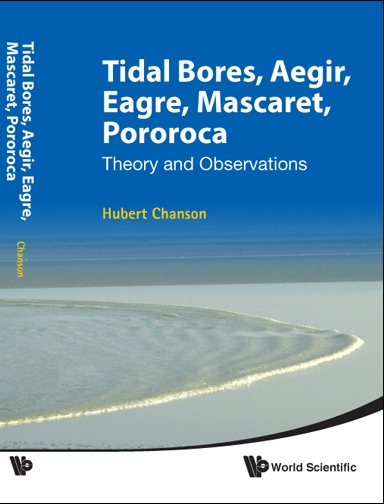
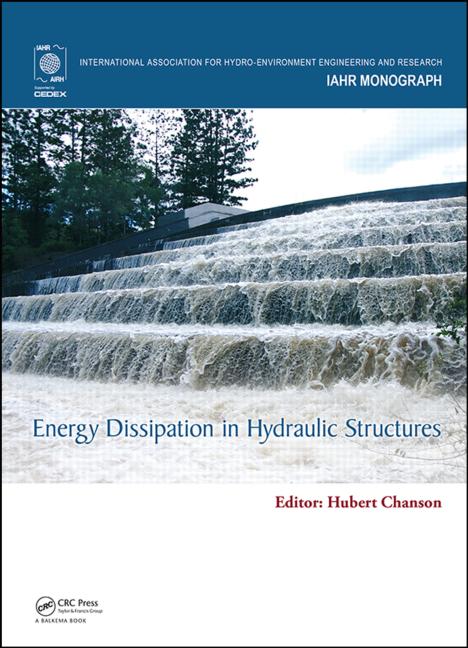
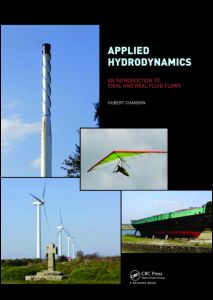

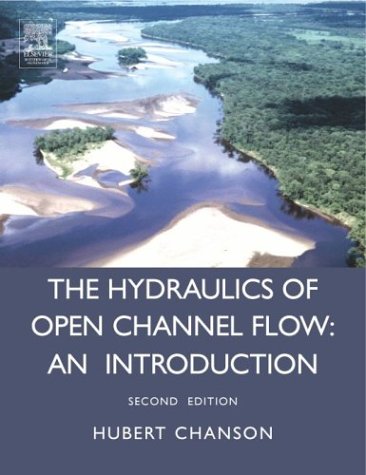
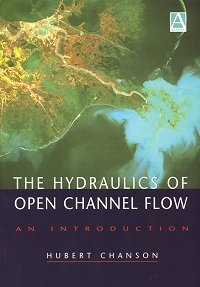
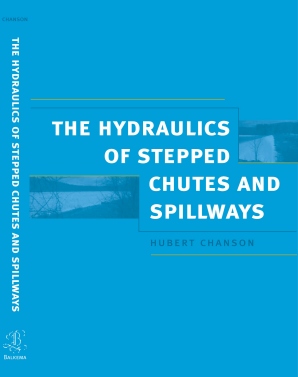



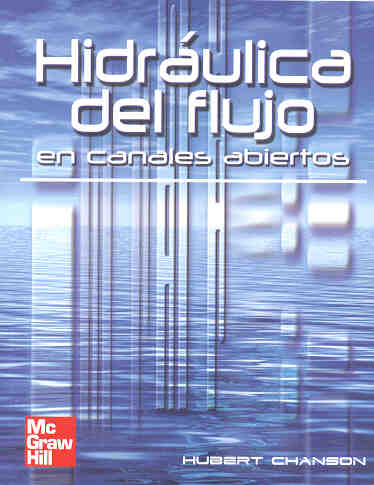
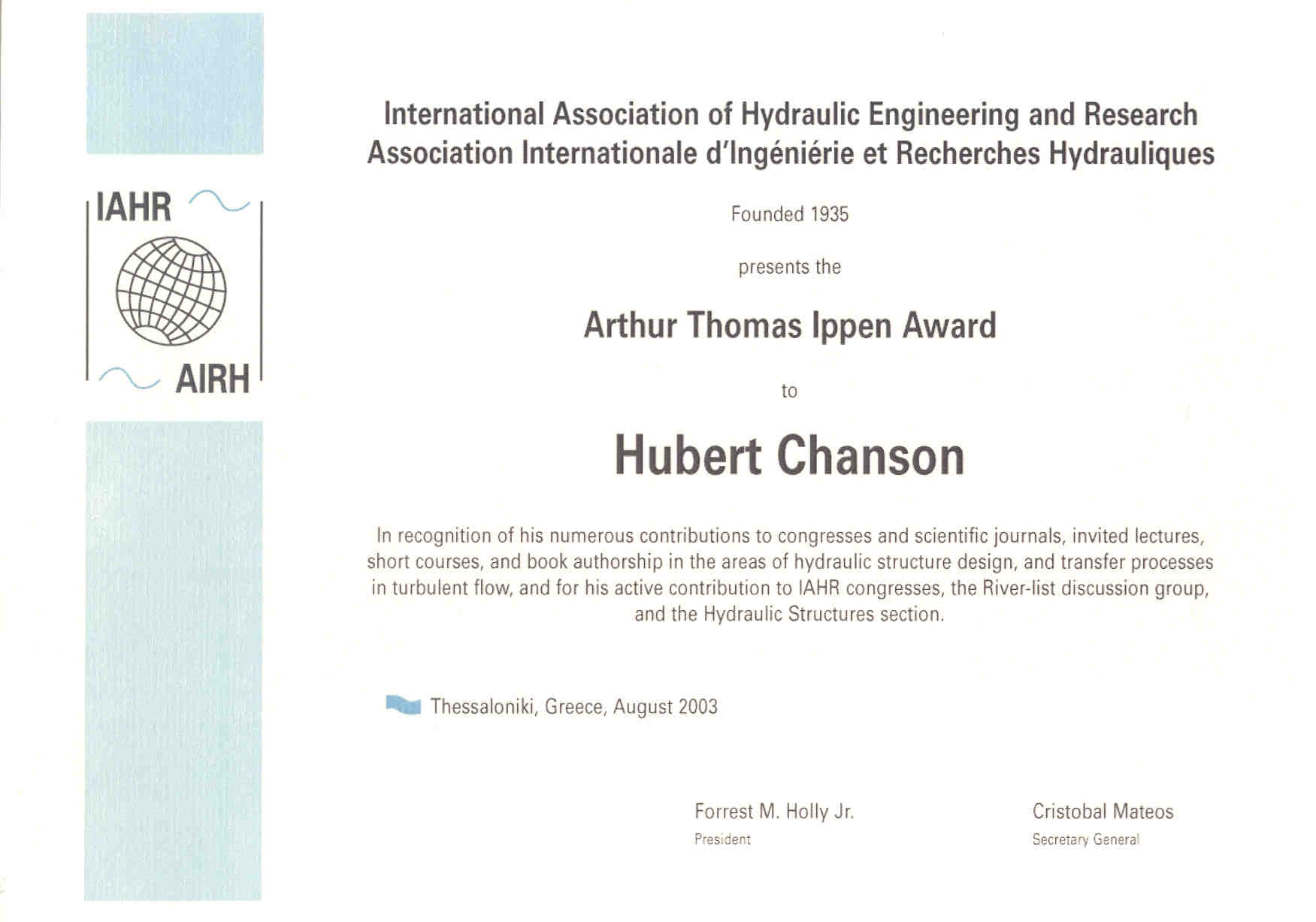
 Presentation
Presentation
















